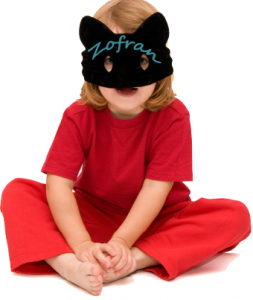The best questions often stem from the inquisitive learner. As educators, we love, and are always humbled by, those moments when we get to say, “I don’t know.” For some of these questions, you may already know the answers. For others, you may never have thought to ask the question. For all, questions, comments, concerns, and critiques are encouraged. Welcome to the Kids Korner.
Explore This Issue
ACEP Now: Vol 36 – No 10 – October 2017Question 1: In children with a closed head injury and no head imaging in the emergency department, will ondansetron mask a significant intracranial injury?

ILLUSTRATION: Chris Whissen & shutterstock.com
While we commonly see closed head injuries and concussions, there are very few data addressing this question. We found two articles evaluating ondansetron administration and closed head injury, and neither thoroughly address giving ondansetron as a discharge prescription. The first article by Kinnaman et al is a survey of emergency medicine providers, of which 90 percent (238 of 265 total respondents) treated only children in their practice environment.1 The response rate of the survey was noted to be 29 percent. This study addresses practitioner management of concussion only, finding that 142 of 265 (54 percent) of surveyed practitioners treat concussion with ondansetron. There is no mention of whether this is an ED dose only, home prescription, or combination of the two. While this study is a survey and subject to a number of biases, one conclusion that may be drawn is that it is not uncommon to treat concussion with ondansetron.
The other study is a retrospective study of two tertiary emergency departments over the course of eight years (n=28,271 total patients) by Sturm et al.2 The primary outcome was evaluating for return visits within 72 hours in children (6 months to 18 years of age) who received a head CT in the pediatric emergency department (PED) and who did and did not receive ondansetron in the PED. The secondary outcome evaluated bounce backs in children who got admitted (within 72 hours) who did not receive a head CT in the PED initially and assessed whether ondansetron masked any “missed cases,” defined as skull fracture or intracranial hemorrhage. This secondary outcome analysis best addressed our clinical question.
During this eight-year period, there were 21,595 children seen in the PED for head injury who did not receive a head CT. For these discharged children without head CT, 433 of 21,595 (2 percent) received ondansetron during their PED stay, of which 12 patients (2.8 percent) returned within 72 hours. For children who did not get a head CT and did not get ondansetron during their PED visit, 1.8 percent (385 of 21,162) returned within 72 hours. There was no statistically significant difference between these two groups (P=0.105). After controlling for acuity and demographics, ondansetron had no significant effect on return rates (odds ratio 1.15; 95% CI, 0.56–2.36). Of the 433 patients in the non–head CT group who received ondansetron in the PED at initial presentation, there were no missed diagnoses (0 of 433). In the non–head CT group who did not receive ondansetron, there were seven missed diagnoses (7 of 21,162 patients; P=0.36), and this finding was not statistically significant. The authors do not mention or address how many children in the non–head CT group got a home prescription for ondansetron, so no definitive conclusions can be drawn based on the current literature.
What does all this mean? While extremely limited data exist, they suggest that giving ondansetron in the PED to a child with a head injury without head CT imaging is potentially safe and probably does not mask any significant intracranial injuries.
Summary
A single, large retrospective study suggests that giving ondansetron in the PED for a child with a head injury, even when you’re not imaging the brain, probably does not mask a significant intracranial injury. With regard to giving a home prescription for ondansetron and masking significant intracranial injuries, we found no current literature on that topic.
Antibiotics for Parotitis
Question 2: For parotitis in children, should antibiotic therapy be considered, and if so, what bacterial coverage should be provided?

PHOTO: shutterstock.com
Most studies addressing this topic include both adult and pediatric patients. We could not identify any prospective studies. We are only addressing what’s considered suppurative parotitis and not mumps, a common cause of viral parotitis.
The first study is a six-year retrospective study by Cohen et al from 1984 to 1989 (n=11) that looked at cases of recurrent parotitis in children.3 Please note we’re talking about recurrent parotitis, meaning patients who have had parotitis previously. The ages ranged from 1 to 7 years, and they mention that “most” (no specific number or percentage was provided) had either viridans streptococci or Haemophilus influenzae.
The second article is a 25-year retrospective study that only looked at bacterial suppurative sialadenitis (n=47) and included both children and adults (n=7 children).4 The author didn’t differentiate between primary and recurrent parotitis and evaluated all salivary gland infections. The predominance (32 of 47; 68 percent) were from the parotid gland. In those 32 cases, the author found anaerobes (94 percent), Staphylococcus aureus (31 percent), H. influenzae (12 percent), and viridans streptococci (12 percent) to be the biggest culprits. It appears a majority of these were polymicrobial, meaning we should consider covering anaerobes, S. aureus, viridans streptococci, and H. influenzae. A separate 35-year retrospective study by Laskawi et al included 21 pediatric patients with parotitis and found both S. aureus (50 percent) and group A strep (50 percent) as the infectious bacterial agent.5
Conclusion
Although the majority of parotitis cases are viral, suspected bacterial causes (ie, S. aureus, Strep species, H. influenzae, and anaerobes) warrant antibiotic coverage.
 Dr. Jones is assistant professor of pediatric emergency medicine at the University of Kentucky in Lexington.
Dr. Jones is assistant professor of pediatric emergency medicine at the University of Kentucky in Lexington.
 Dr. Cantor is professor of emergency medicine and pediatrics, director of the pediatric emergency department, and medical director of the Central New York Poison Control Center at Upstate Medical University in Syracuse, New York.
Dr. Cantor is professor of emergency medicine and pediatrics, director of the pediatric emergency department, and medical director of the Central New York Poison Control Center at Upstate Medical University in Syracuse, New York.
References
- Kinnaman KA, Mannix RC, Comstock RD, et al. Management of pediatric patients with concussion by emergency medicine physicians. Pediatr Emerg Care. 2014;30(7):458-461.
- Sturm JJ, Simon HK, Khan NS, et al. The use of ondansetron for nausea and vomiting after head injury and its effect on return rates from the pediatric ED. Am J Emerg Med. 2013;31(1):166-172.
- Cohen HA, Gross S, Nussinovitch M, et al. Recurrent parotitis. Arch Dis Child.1992;67(8):1036-1037.
- Brook I. Aerobic and anaerobic microbiology of suppurative sialadenitis. J Med Microbiol. 2002;51(6):526-529.
- Laskawi R, Schaffranietz F, Arglebe C, et al. Inflammatory diseases of the salivary glands in infants and adolescents. Int J Pediatr Otorhinolaryngol. 2006;70(1):129-136.
Pages: 1 2 3 | Multi-Page




No Responses to “Pediatric Emergency Medicine Tips for Treating Closed Head Injuries and Using Antibiotics for Parotitis”